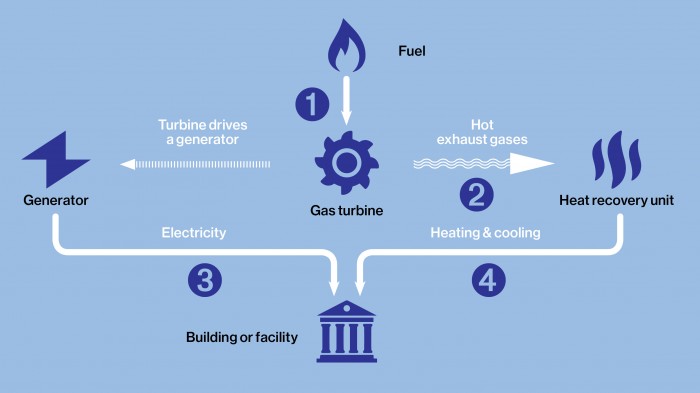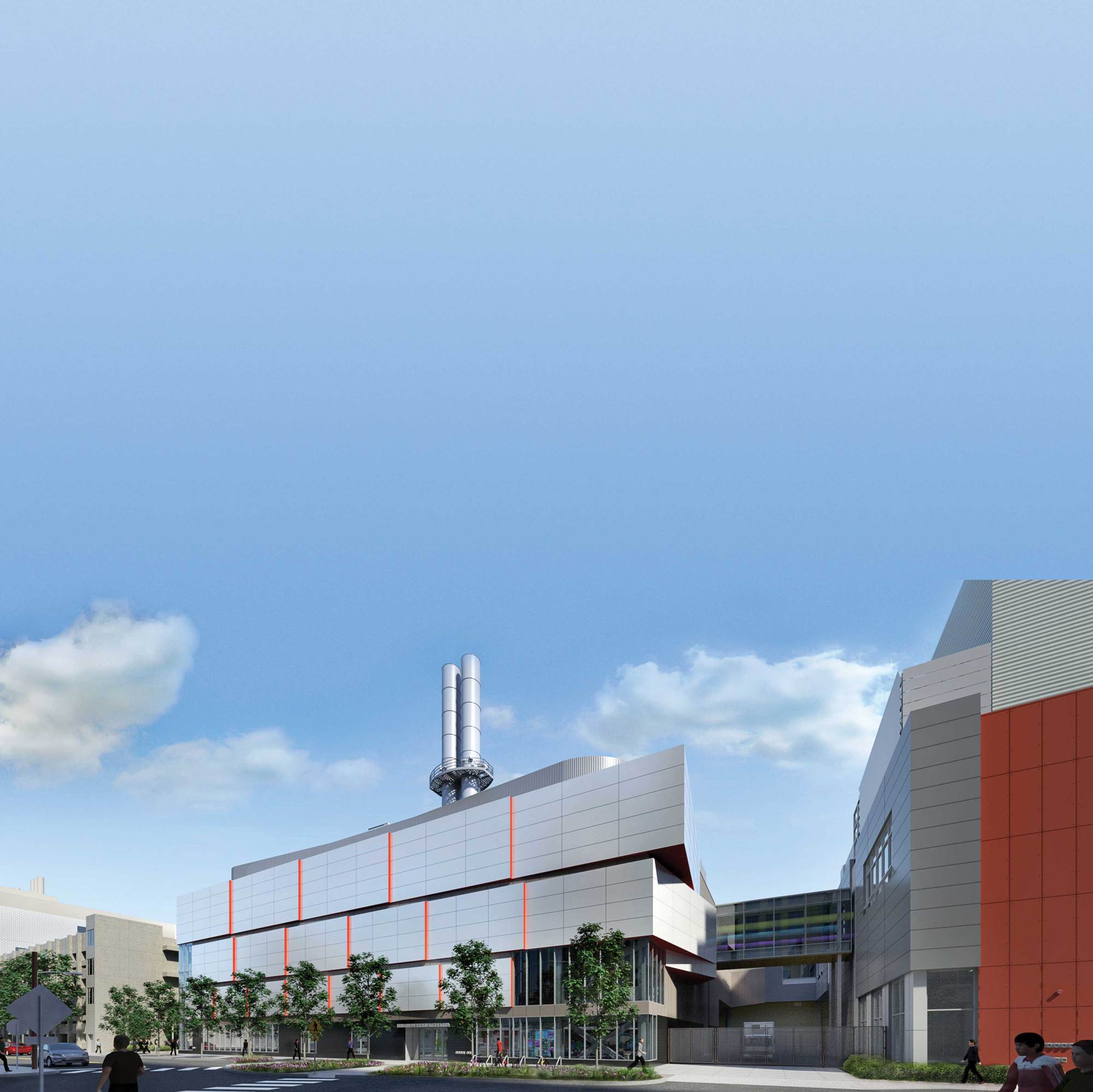Over the past century, while MIT researchers have tracked the world’s search for cheaper, more efficient technologies to power a growing and industrializing population, an energy system in miniature has been blazing the same trail in their own backyard. In 1916, the Institute made the far-sighted decision to build a centralized power and steam plant on its new campus, moving from coal to oil in the 1930s. It began buying power from the grid in 1938, but the oil shock of the 1970s led MIT to create its own power again; in 1995 it opened a cogeneration plant that reuses waste heat. Upgrades now under way will make the Central Utilities Plant even more efficient as it continues to power MIT’s growth and point the way to a clean energy future.
How does cogeneration work? The current plant produces: Don’t settle for half the story.
Get paywall-free access to technology news for the here and now.
Cogeneration next
Facts and figures to sustain your inner geek

Rendering of planned Co-generation building
sources: miT Utilities, MIT News office; rendering courtesy of Ellenzweig, architect
This story is only available to subscribers.
You’ve read all your free stories.
MIT Technology Review provides an intelligent and independent filter for the flood of information about technology.
Subscribe now Already a subscriber? Sign inThe upgraded plant will offset:
MIT Central Utilities Plant